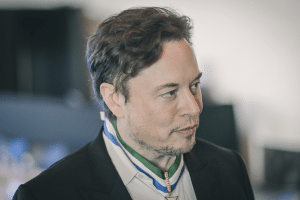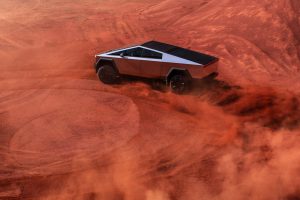- ⚡ The 2025 Hyundai IONIQ 5 equips the NACS inlet, allowing Supercharger access without adapters.
- 🚗 Hyundai’s shift to NACS signifies a growing trend among automakers adopting Tesla’s charging standard.
- 🌐 Tesla’s extensive global charging network influences manufacturers to integrate the NACS port.
- 🔋 The new IONIQ 5 offers increased battery capacity, range, and extensive model options.
- 🛠️ Interior upgrades feature redesigned controls, a new center console, and improved seating.
- 🚙 Exterior enhancements include new bumpers, a rear spoiler, and aerodynamic wheels.
In an era where electric vehicles (EVs) are revolutionizing transportation, the integration of charging standards is crucial for widespread adoption. The 2025 Hyundai IONIQ 5, now equipped with the North American Charging Standard (NACS) inlet, marks a significant advancement by offering seamless access to Tesla’s Supercharger network without the need for complex adapters. This blog post delves into the implications of this shift, the features of the new Hyundai IONIQ 5, and the broader trends in EV charging infrastructure.
Advancements in Charging: A New Era for Hyundai
Hyundai’s decision to equip the 2025 IONIQ 5 with the NACS inlet is a strategic move that aligns with industry trends and consumer demands. Here’s why this matters:
- Streamlined Charging Process: By adopting the NACS inlet, Hyundai eliminates the need for additional adapters when accessing Tesla’s Supercharger network. This simplifies the charging process for IONIQ 5 owners, providing more convenience and expanding charging possibilities.
- Industry Adoption of NACS: The shift to NACS highlights a growing trend among automakers. With Tesla having set the benchmark in charging infrastructure globally, many manufacturers are now aligning with this standard to benefit from Tesla’s expansive and reliable network.
- Impact on the Market: As more automakers adopt NACS, the market dynamics could shift significantly. This move could potentially set a precedent for future EVs, encouraging a more unified charging infrastructure that fosters interoperability and consumer convenience.
The 2025 Hyundai IONIQ 5: Features and Innovations
Beyond the charging advancements, the 2025 Hyundai IONIQ 5 boasts impressive upgrades that make it a formidable contender in the EV market.
Performance Enhancements
- Increased Battery Capacity and Range: The new IONIQ 5 is equipped with a larger battery, promising longer ranges and reducing the frequency of charging – a critical factor in EV ownership satisfaction.
- Model Variants: The IONIQ 5 offers multiple model options to cater to diverse consumer preferences, ranging from rear-wheel-drive to all-wheel-drive variants, each tailored with unique features and performance specs.
Interior Upgrades
- Revamped Controls and Consoles: The interior of the IONIQ 5 has received a makeover, featuring redesigned HVAC controls, a new center console with intuitive physical controls, and enhanced seating comfort.
- Enhanced Comfort Features: Heated rear seats in higher trims and a new steering wheel design add to the comfort and luxury feel of the vehicle.
Exterior Design
- Aesthetic and Aerodynamic Improvements: The 2025 IONIQ 5 showcases a bold new look with restyled front and rear bumpers, a refined rear spoiler, and aerodynamic wheels, all of which enhance the vehicle’s aesthetic appeal and performance efficiency.
The Bigger Picture: EV Charging Standards and Future Trends
The adoption of the NACS by Hyundai and other automakers is reflective of larger trends within the EV industry:
The Rise of Tesla’s Charging Network
- Global Dominance: Tesla’s charging infrastructure is not only vast but also proven, driving other manufacturers to adapt for better market competitiveness.
- Consumer Influence: Easy access to a reliable charging network can significantly impact consumer purchase decisions, pushing automakers to prioritize seamless charging solutions.
Industry Insights
- Unified Standards: A shift towards a common charging standard can dramatically reduce infrastructural redundancies and optimize the user experience, making EVs more attractive to a broader audience.
- Predicting the Future: As more automakers embrace unified charging technologies, the landscape of EV manufacturing and innovation continues to expand, inviting further investment and development.
Conclusions
The evolution of the Hyundai IONIQ 5 with its integration of the NACS inlet signals not only an important development for Hyundai but also a pivotal moment for the EV industry at large. As manufacturers align with widespread charging standards like those established by Tesla, the road ahead is poised for more cohesive, consumer-friendly EV experiences.





